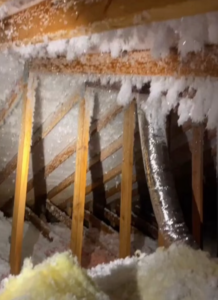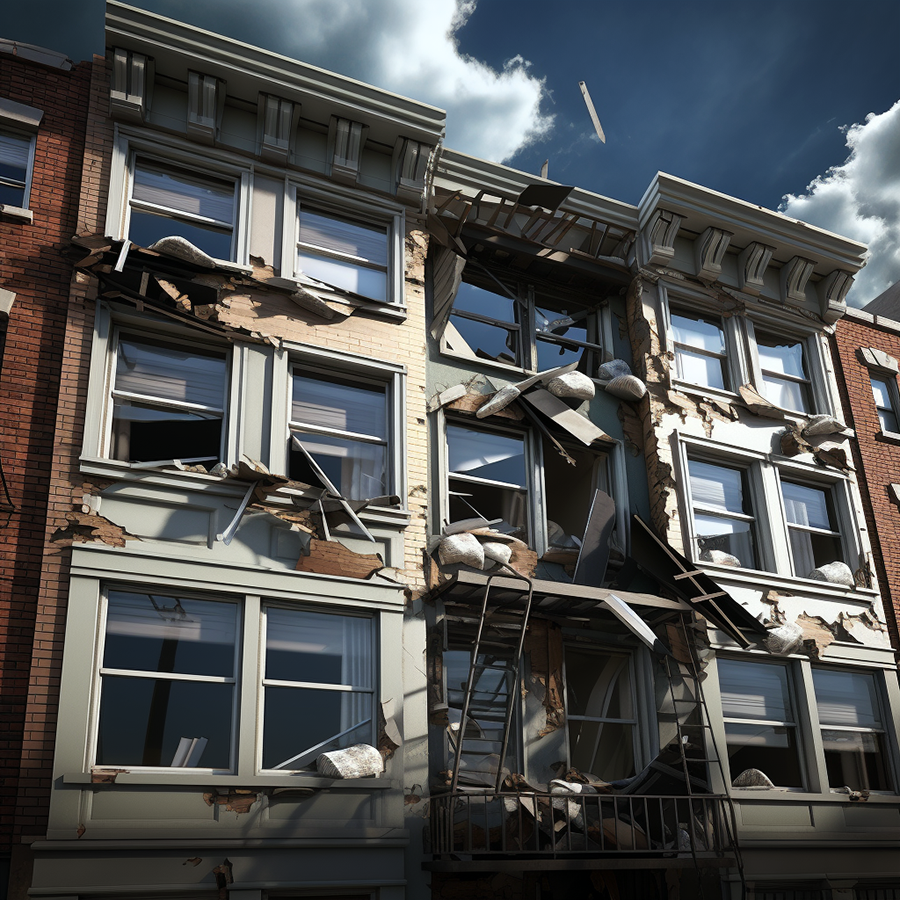As a licensed Montana public adjuster, I get no shortage of calls for damage related to snow, cold, and fluctuating temperatures. These calls are primarily concerning pipe breaks and ice damming. The latter of which were extremely common last winter (22/23). The 2022-2023 winter season was a notable one for much of the US, with many areas logging record snowfall. Montana was no exception, with Record snowfall in many areas. According to the National Oceanic and Atmospheric Administration (NOAA), Silver Gate, Montana received 853 inches of snow during the 2022-2023 winter. This is significantly above the average 600 inches the area usually sees. Increased snowfall totals were credited largely to a La Niña winter pattern, which brought above-average precipitation to much of the western United States. My own home in Bozeman, MT sustained a large ice dam on the north eaves. Luckily, I avoided any interior damage, and the issue has since been remedied with heat cables running along the eave and in the gutters.
One notable call I received was for damage to a 4-building condominium complex in Big Sky, MT presumably resulting from ice damming. Though all units experienced ice damming to some extent, one building had sustained extensive interior damage in addition to the roof being compromised from the ice buildup. The damage was identified in March of 2023 after significant leaks were reported. The unit owner had filed a claim for the extensive interior water damage and was able to complete repairs. The community simultaneously filed a claim under the association’s master policy for damage to the building envelope resulting from ice damming. The carrier for the association enlisted the services of an engineer to evaluate the damage. Their purpose was to conduct a “water intrusion causation” assessment, and effectively determine whether ice damming precipitated the water damage to the interior unit. The engineer report came up with the following conclusions;
- The lack of attic ventilation, roof sealants in lieu of flashing and counterflashing, and misapplied and/or;
- A lack of ice and rain underlayment were construction defects that promoted ice dams and attic condensation to form which facilitated water to damage the interior of the dwelling.
Effectively, the carrier-retained engineer placed the cause for water intrusion on inadequate ventilation. Naturally, as a public adjuster, I was suspect of these determinations. Moreover, as a Montana public adjuster, I understood how the winter leading up to this loss was unique in the amount of snow it produced. This, coupled with the fact that the property had been built in 2012 and had never experienced any issues until 2023 made me think it was more likely an ice dam caused the damage rather than condensation. With photos of the ice dam on the roof in question, causation could be reasonably proven.

Upon reviewing the policy, I determined the best path forward was to get the opinion of another engineer, specifically one with experience in diagnosing ice dams and resulting damage. Upon the engineer’s review of the carrier’s report, it was determined that a cursory site visit would be necessary in advance of putting together a proposal for a full report, so we set a date to go out and do a walkthrough. At the time the inspection was conducted, there was snow on the roofs, and the roofs had been replaced over the summer (so not much to observe there). After an inspection of the building envelope and attic space, we came to generally the same conclusion that the carrier’s engineer had! The soffit vents in the attic cavities above where the water damage had occurred, we blocked, preventing ventilation of the spaces and promoting increased condensation buildup (and Ice damming). Long story short, even though there was clearly an ice dam and interior damage that had occurred, there was no way to definitively prove that the ice dam had;
-
-
- Not been caused by inadequate ventilation
- Been the proximate cause of water intrusion into the affected unit.
-
Alternatively, there was no way to refute that condensation accumulation had not occurred.
The engineer I brought out had inspected a property with similar issues and construction in the Lake Tahoe area the year before. In that case, he was able to document the condensation phenomenon as it was occurring and provided me with the below photo showing active condensation.
The Moral of The Story
As disappointed as I was to have to confront the fact that this was not a claim I was going to be able to assist with, I was glad to have come to that conclusion before investing significant time (and cost) into its investigation. A good public adjuster, especially when dealing with Montana ice dam losses should exercise objectivity and perform due diligence when qualifying the loss. Beyond thorough policy review, it is often imperative to defer to an expert, especially when the basis for a denial is founded in causation. This instance was a good lesson in why it is important to thoroughly review carrier engineer reports, and not dismiss them as inherently incorrect due to bias.
Montana Ice Dam Claims
Montana ranks 16th in the nation for snowfall, averaging 162 inches annually, with higher elevations like Big Sky averaging a whopping 400 inches. Coupled with significant variations in temperature throughout the winter months, Montana’s winter weather is a recipe for damaging ice dams. On our page “ice dam insurance claims” we touch on best practices for mitigating ice dams to prevent damage and the coverage questions that arise when damage does occur. Ice dams can affect both residential and commercial buildings. How damage manifests itself may be different depending on the construction of the building, the principles of how the ice dams form is the same. Nonuniform roof temperatures cause snow on the high end of the roof to melt, water to run toward the low end, and refreeze. The cycle repeats and the ice dam grows. While ice dams can occur with any level of snow accumulation, more accumulation and repeated accumulation will exacerbate the problem.
Why Hire a Montana Public Adjuster?
A good public adjuster should be considered an asset for any policyholder who has or thinks they may have sustained a covered loss. An experienced public adjuster will be able to review the requisite information, survey the property, and advise on the best path forward. It is in a policyholder’s best interest to hire us prior to filing an ice dam insurance claim to ensure the claim is viable. Because public adjusters have a fiduciary responsibility to the insureds they represent and their fees are contingent on their ability to recover from insurance carriers, they are best suited to provide an objective assessment to an insured looking for guidance when considering how to repair their property.


